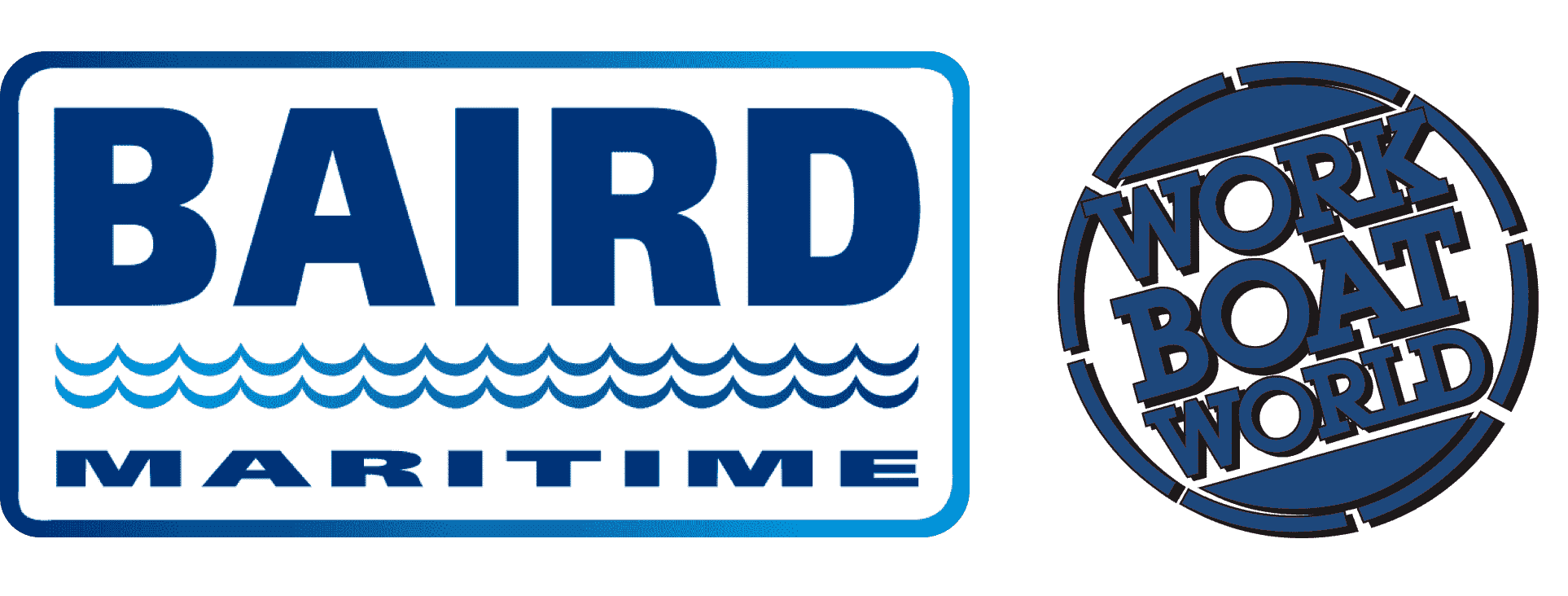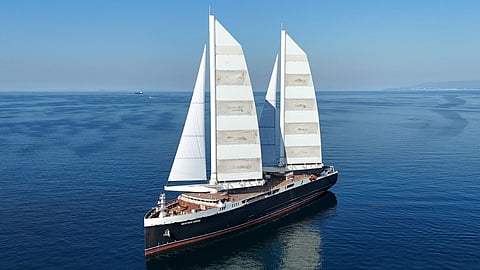VESSEL REVIEW | Neoliner Origin – France's Neoline to deploy sailing Ro-Ro cargo ship on trans-Atlantic routes
French shipping company Neoline has inaugurated a new sailing Ro-Ro cargo ship built by RMK Marine Shipyard of Turkey.
The Bureau Veritas-classed Neoliner Origin was designed by French naval architecture firm Mauric as a Ro-Ro cargo vessel with wind propulsion as her primary power source. According to Mauric, extensive data will be collected aboard this vessel during her initial voyages to refine the models that enabled her design.
Mauric said that, based on the data, it will be able to confirm, improve its models, and increase the general quality of its sailing vessel designs to make them efficient, manoeuvrable with a reduced crew as well as energy-efficient, sustainable, and more environmentally friendly.
"When the client first approached RMK Marine, the concept was for a dedicated line vessel operating between France and the United States across the North Atlantic," the builder told Baird Maritime.
"The client’s main expectation from RMK Marine was that the selected equipment and materials would contribute to maximum energy efficiency. For example, the hull coating was specifically chosen to reduce fuel consumption by minimising hydrodynamic resistance."
RMK Marine said another critical aspect was passenger comfort. The cabins therefore feature balconies with transparent exterior panels, allowing guests to enjoy an uninterrupted view of the sea, as far as maritime safety regulations would permit.
Designed with sails as the main propulsion
Neoline and Mauric began development of Neoliner Origin in 2016, first by developing a detailed preliminary design of the vessel, allowing the owner to promote its concept to shippers and finalise its business model. The preliminary studies enabled the development of industrial solutions meeting Neoline's requirements, particularly for the transport of heavy or large-dimension cargo efficiently and safely on trans-Atlantic voyages.
According to Mauric President Vincent Seguin, the project to design Neoliner Origin is noteworthy due to its specifications and design choices that are all oriented towards maximising wind propulsion efficiency and reducing energy consumption. Mauric worked in close collaboration with Neoline to design a vessel to be fitted with wind propulsion from the outset instead of simply being a cargo ship equipped with rigging as a backup for combustion engines.
Numerous finite element calculations enabled optimisation of the vessel's structure to maintain carrying capacity, transfer the rigging loads to the main deck, and respect the vessel's dimensional constraints.
Optimised for standard loads and irregularly sized freight
Neoliner Origin has an LOA of 136 metres (446 feet), a beam of 24.2 metres (79.4 feet), a draught of 5.5 metres (18 feet), space for 1,130 lane metres (3,710 linear feet) of freight across two garage decks and 265 TEUs (together amounting to 5,300 tonnes), and accommodation for 12 passengers in addition to her crew of 20.
Loading of Ro-Ro freight is via a stern ramp. In addition to vehicles, agricultural equipment such as tractors and construction machinery including excavators and bulldozers can be carried in the garage decks. The container cargo can meanwhile consist of various combinations of 20-foot and 40-foot dry and refrigerated boxes as well as boxes laden with ATEX-compliant dangerous goods.
Irregularly shaped cargo such as aircraft components, offshore wind turbines, and generators can also be transported.
"During the design phase, the integration of the sailing system with the vessel, as well as the coordination between the hull form and the stern and fixed ramp doors, required close and meticulous follow-up," said RMK Marine. "With the support of various departments, we addressed these challenges through practical and innovative solutions."
The builder added that due to the vessel’s hull form and the need to accommodate oversized cargo, it encountered significant limitations in cabling and piping within the cargo area. However, these challenges were overcome by implementing the necessary modifications.
The two 1,500-square-metre (16,000-square-foot) sails developed by Chantiers de l'Atlantique will enable the ship to reach speeds of up to 16 knots, and Mauric said trans-Atlantic voyages at 11 knots are possible on the sails alone. The sails are made up of rectangular composite panels assembled together and are mounted on 76-metre (250-foot) masts that can be folded to enable safe passage underneath bridges and through port infrastructure with ease.
The sails were built to be significantly more durable than conventional sails that become fragile beyond a certain threshold.
"Since the vessel’s primary propulsion system relies on its sails, and considering the substantial weight of the solid sail system used, extremely precise workmanship was required in the area where the sails were installed," RMK Marine told Baird Maritime. "Our team worked with millimetric accuracy—no small feat for a vessel of this size—ensuring the flawless alignment and functionality of the entire system."
Beyond conventional navigation, the ship relies on specialised software and a network of sensors to optimise wind data and sail propulsion in real time.
"Active control of the sail system—such as opening and closing panels or folding the masts—is fully managed electronically, a capability rarely seen in commercial Ro-Ro vessels," the builder said.
Hybrid propulsion for backup
A hybrid propulsion setup consisting of a 3,180kW diesel engine and a 900kW electric motor is also fitted, and this can deliver speeds of up to 14.9 knots at 100 per cent MCR and a range of 7,000 nautical miles. Power for the onboard systems will be supplied by two 665kVA generators.
The vessel also features retractable anti-drift fins from Foure Lagadec. These further enhance stability and directional control under sail, which RMK Marine said is a rare capability in commercial Ro-Ro shipping.
"To maximise efficiency, Neoliner Origin integrates advanced weather-routing systems, using wind forecasts, route optimisation, and sail positioning data to fine-tune propulsion, demonstrating how sustainability and high-tech innovation can operate hand in hand," said RMK Marine.
The advanced weather-routing system analyses wind and sea conditions and optimise the vessel's trans-Atlantic routes. The sail rigging system is meanwhile supported by a network of sensors, actuators, and automation tools—for example, the sails automatically adjust every minute to the wind angle, and the masts can be folded when needed.
"In addition, the ship features integrated energy management and efficiency optimisation systems," added RMK Marine. "These include the use of electric mode propulsion, shore-power connectivity in ports, and infrastructure prepared for future battery integration."
The onboard accommodation includes a passenger lounge, a sun deck, a gym, two-person cabins with private bathrooms and balconies, and a dining area. Wifi connectivity is also available.
Neoliner Origin has already begun operating a regular monthly service between Saint Nazaire and Baltimore, with each return trip to France passing through Halifax and Saint-Pierre and Miquelon.
"Although we had not previously undertaken a Ro-Ro project, building the world’s first sail-powered Ro-Ro vessel has been an immense source of pride for us," RMK Marine told Baird Maritime. "Throughout both the design and construction phases, we consistently aimed to maintain the highest level of customer satisfaction.
"Naturally, there were certain limitations to what we could achieve, but we continued our progress in full agreement with our client through open discussions and mutual understanding. Advancing the design process in close collaboration with the client also proved highly effective in preventing potential misunderstandings along the way."


